Bulbine latifolia
Bulbine latifolia (L.f.) Spreng. (= Bulbine natalensis Baker)
Family: Asphodelaceae
Common names: broad-leaved bulbine (Eng.); rooiwortel, geelkopieva (Afr.); incelwane (isiXhosa), ibhucu (isiZulu)
Introduction
Bulbine latifolia is one of the largest species in the genus. It can be identified by its aloe-like growth, but with an absence of marginal teeth on the leaves and elongated racemes bearing small yellow flowers. It is easily grown and can flower in the first season.
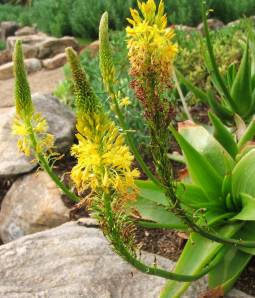
Description
Description
This is a rapid growing succulent plant, aloe-like in appearance, forming solitary rosettes up to 20 cm high. Roots fleshy, yellowish, terete (circular in cross-section). The leaves are triangular-lanceolate 190-400 x 30-60 mm green, with faint lines, firm, ascending, older leaves becoming recurved; upper surface flat, slightly chanelled towards the end; lower surface flat to somewhat rounded margin acute, and bearing a minute fringe of hairs (minutely ciliate). The tip tapers to an acute point.
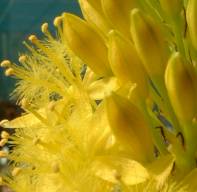
The inflorescence consists of 1-4, densely flowered racemes 400-1017 mm tall. The flowers are carried on the upper half, (up to 8 flowers opened at a time). Flowers about 7-12 mm in diameter, crowded bearing membranous bracts. Flower stalks 12-14 mm long, terete. The 6 petals are yellow, spreading and 7 mm long. The filaments of the stamens are bearded which distinquishes it from Bulbinella, a genus with which it is often confused. Style 6 mm long. Plants flower in spring.
Fruits are small capsules, rounded and when ripe releasing small blackish flattened wind dispersed seed.
Conservation Status
Status
Bulbine latifolia is a very common species in the Eastern Cape thicket vegetation. It is often a pioneer and attractive flowering en masse.
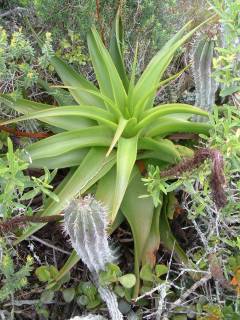
Distribution and habitat
Distribution description
Bulbine latifolia is widely distributed in the south-eastern parts of South Africa from Knysna in the Western Cape. It is widespread in the Eastern Cape Province, and often found in dry river valleys and rocky gorges. Its grows in soils derived from shale or sandstone, but always on well drained sites. Populations can be seen along the National Road from Port Elizabeth towards Grahamstown and roads north of Port Elizabeth. It is also often found on cliffs.
Rainfall in its habitat varies from 600-1000 mm per annum, mainly received in summer. The climate is mild and only light frosts occur. Summers are very hot. The plants usually share their habitat with other succulent thicket species such as Aloe africana, Aloe pluridens, Aloe speciosa, Aloe striata, Aloe ferox, Crassula ovata, Portulacaria afra, Rhus longispina and Gasteria bicolor. It usually grows in full sun, however often beneath shrubs. The lower stem when damaged and exposed to light displays a distinct orange colour - hence the Afrikaans common name rooiwortel (meaning red root).
Derivation of name and historical aspects
History
The generic name Bulbine pertains to the bulb-like nature of some of its relatives. Its specific Latin epithet latifolia, refers to its broad leaves. It was first named Anthericum latifolium by the younger Linnaeus in 1781. It is not known who first introduced it to Europe, but Jacquin illustrated the plant in his Icon. Plantarum Rariorum (1781-1795) .
The genus Bulbine consists of about 90 species from South Africa and Australia but mainly from the southern and western parts of South Africa. They are all succulent plants, many of these have horticultural value and some are widely cultivated. Perhaps the best known of these is B. frutescens (stalked bulbine or rankkopieva), which is a popular ground cover.
Ecology
Ecology
Bulbine latifolia is pollinated by insects. The ascending inflorescence with fruiting capsules and winged seed is an adaptation to wind dispersed. Fleshy leaves store water and making it drought tolerant and an ideal water wise garden plant. This plant is well adapted to disturbance such as grazing and trampling as the plants regenerate easily from seed.
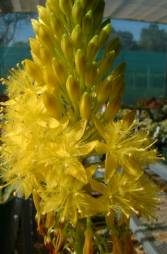
Uses
Use
Bulbine latifolia is popular among the traditional healers. The roots are used, taken orally to quell vomiting and diarrhoea, but also for a number of other ailments, including diabetes adn rheumatism (Van Wyk et al 1997). The leaf sap is used to treat wounds, burns, eczema, rashes and itches.
Growing Bulbine latifolia
Grow
Bulbine latifolia is a rapidly growing pioneer plant thus ideal for the new garden. It is easily propagated from seed and given ideal conditions flowers in its first season. This fast grower is ideal for a new garden, thriving especially when massed on rockeries and embankments. The plants live from 5-8 years and are best replaced when they lose vigour.
Bulbine latifolia is easily propagated from seed. Seed should preferably be sown during the warmer months in sandy well drained soil. Cover the seed with a thin layer of sand for anchorage. Keep moist - germination is within 3 weeks. At this stage it is best to add a fungicide when watering. The seedlings grow rapidly and can be planted out in small containers when they are large enough to handle. The young plants can be planted about 50 cm apart in the garden.
It is best grown in full sun. The soil should preferably be enriched with compost. It also grows well in containers with a sandy mixture enriched with compost.
It is relatively pest free, but may have occasional fungal infection causing dark leaf spots. These can be treated with a fungicide.
Seed can be harvested in summer and autumn and stored until the warmer months.
References
- Eggli, Urs, 2001. Sukkulenten lexicon. Band 1. Einkeimblaattrige pflanzen (Monocotyledonen),Springer. Berlin
- Van Wyk, B-E, Van Oudtshoorn, B. & Gericke, N. 1997. Medicinal Plants of South Africa. Briza, Pretoria
Credits
Ernst van Jaarsveld
Kirstenboch National Botanical Garden
August 2005
Plant Attributes:
Plant Type: Succulent
SA Distribution: Eastern Cape, Western Cape
Soil type: Sandy, Loam
Flowering season: Spring
PH: Neutral
Flower colour: Yellow
Aspect: Full Sun, Morning Sun (Semi Shade), Afternoon Sun (Semi Shade)
Gardening skill: Easy
Special Features:
Horticultural zones
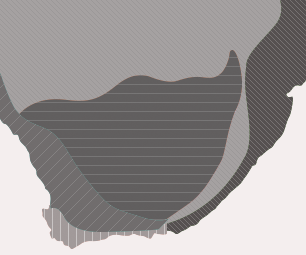







Rate this article
Article well written and informative
Rate this plant
Is this an interesting plant?
Login to add your Comment
Back to topNot registered yet? Click here to register.